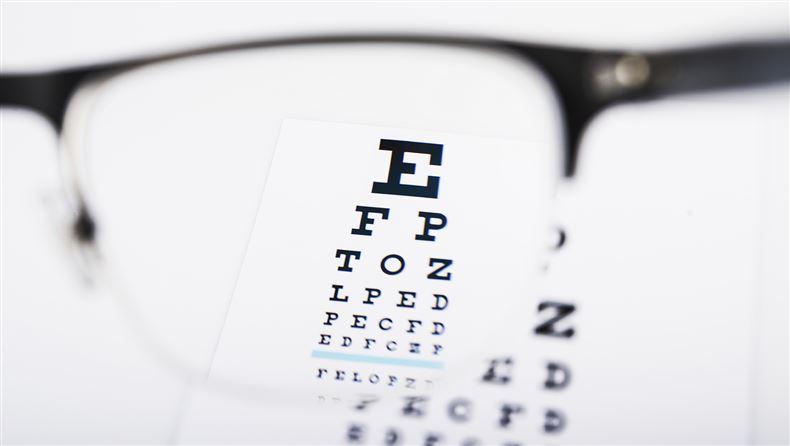Alex Beall
Alex Beall is a freelance writer based in California.

The American Academy of Optometry's plan to reach out to industry students returned better membership and attendance results than expected. One stat that points to its success: 40 percent more students attended its annual meeting in 2015 than in 2014.
In an effort to grow membership and meeting attendance, the American Academy of Optometry embraced a program to engage students. The best news: It worked.
While overall attendance at the Academy's annual meeting jumped 18 percent from 2014, it had a record showing of optometry students: 1,400 students attended the 2015 meeting, a 40 percent increase over 2014.
Much of the credit for that increase can be attributed to a student program the Academy launched six years ago to show students that the organization is important and relevant to a career in optometry.
"The idea was that we wanted students to think of membership in the Academy as their primary professional home throughout their career—not just an option to explore," says Executive Director Lois Schoenbrun, CAE.
After a board member visited an optometry school to meet with students about membership, the Academy decided to make it an official program in which board members would visit each school of optometry at least once every two years.
This brought a shift in the way the Academy related to students. Before the program, students were welcome to attend meetings and become members, but "we really did not have a mindset to make sure that students got it, that the Academy needed to be part of their professional future," Schoenbrun says.
The Academy now works with faculty-student liaisons to set up presentations from board members at each institution. Though free pizza may be the initial draw for students, the presentation is customized for the student body by including faculty and student fellows from that school. Schoenbrun says this is meant to give the audience a sense that membership "is for me."
Getting students to attend the fall annual meeting also takes some coordination with the schools. Students work in the schools' clinics, which become busy during the fall, so schools need to schedule faculty to cover the clinic hours, close the clinic during the meeting, or ration which students can attend. Schools also make other accommodations like allowing students to miss class by bringing in their transcripts from courses taken at the annual meeting. For these reasons, the program is most effective at schools where faculty is highly involved in the Academy.
"We have such a good representation at the schools on the faculty level; a lot of the deans are Fellows. I think it's a lot easier for that to filter down to the students," says Jenny Brown, program manager of membership and communications at the Academy.
Another incentive for students to attend the meeting is to become a Student Fellow. They earn that status by attending certain courses at the annual meeting.
"The students don't really get anything for it except a feel-good that they're part of the Academy—they get the pin, and they put it on their resumes," Schoenbrun says. "They are very proud of it." She says the program creates a mindset among students that, following graduation, becoming a Candidate for Fellowship in the Academy—a process that includes peer-reviewed written work and an oral exam—is the next step in their optometry journey.
While students participate in meetings alongside other attendees, the Academy offers some events specifically for students. These include lunch meetings with doctors about post-graduation residencies and jobs, a student-only welcome reception and exhibit hours, and a dance party.
The student-only exhibit hours were developed to solve a problem both students and exhibitors experienced during the regular exhibit hours. Exhibitors were often overwhelmed with students while trying to sell equipment to doctors, and students often missed the chance to meet with exhibitors because they weren't buyers. The student-only hours let the two groups meet without the pressure, and students who visit a certain number of exhibitors are entered in a raffle for prizes, many of which are donated by the exhibitors.
Helen Viksnins, CAE, senior director of programs, also notes that the meetings offer students the unique opportunity to meet with the "gods of optometry," those who write the textbooks and perform the industry-transforming research.
The Academy tries to encourage students to engage by defraying the costs of becoming a member or attending meetings. It offers scholarships and discounts on the meeting costs and provides affordable student housing during the annual meeting. Student membership costs $15 for the duration of their studies if schools agree to pay membership fees for all students. While the Academy loses money on students, Schoenbrun says it's an investment for the future as students learn Academy fellowship is an integral part of an optometry career.
To create new ways to increase student involvement, the Academy taps into the knowledge of their staff and the board. Schoenbrun says board members are especially helpful because many are in academia and so are closely in touch with the students.
"Our board is really focused on the future," Brown says. "They realize that while students most of the time cost us more money than they bring in, in the future the conversion rates are speaking for themselves. They're becoming engaged as a student, and it's translating into their post-optometry school life."